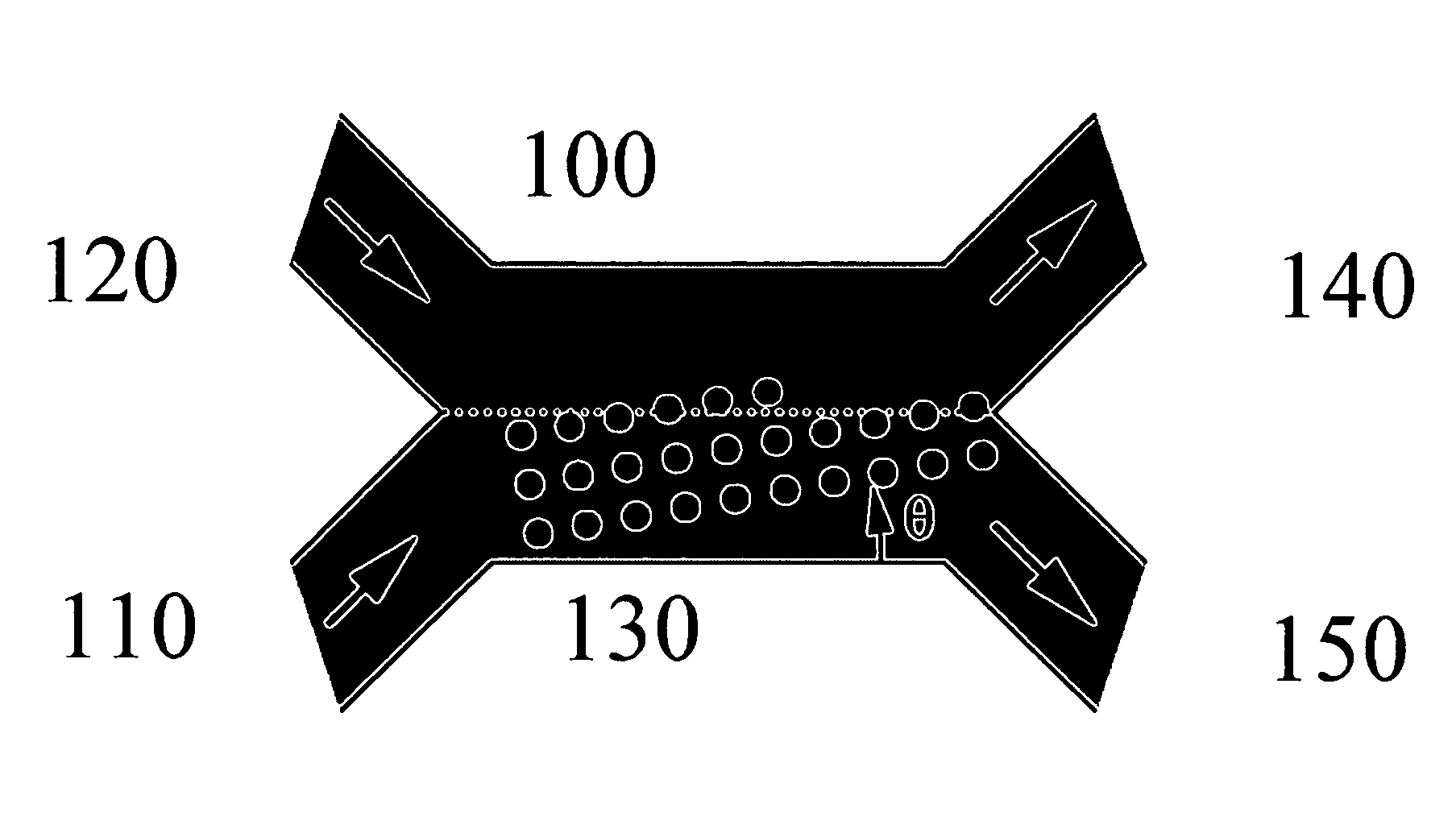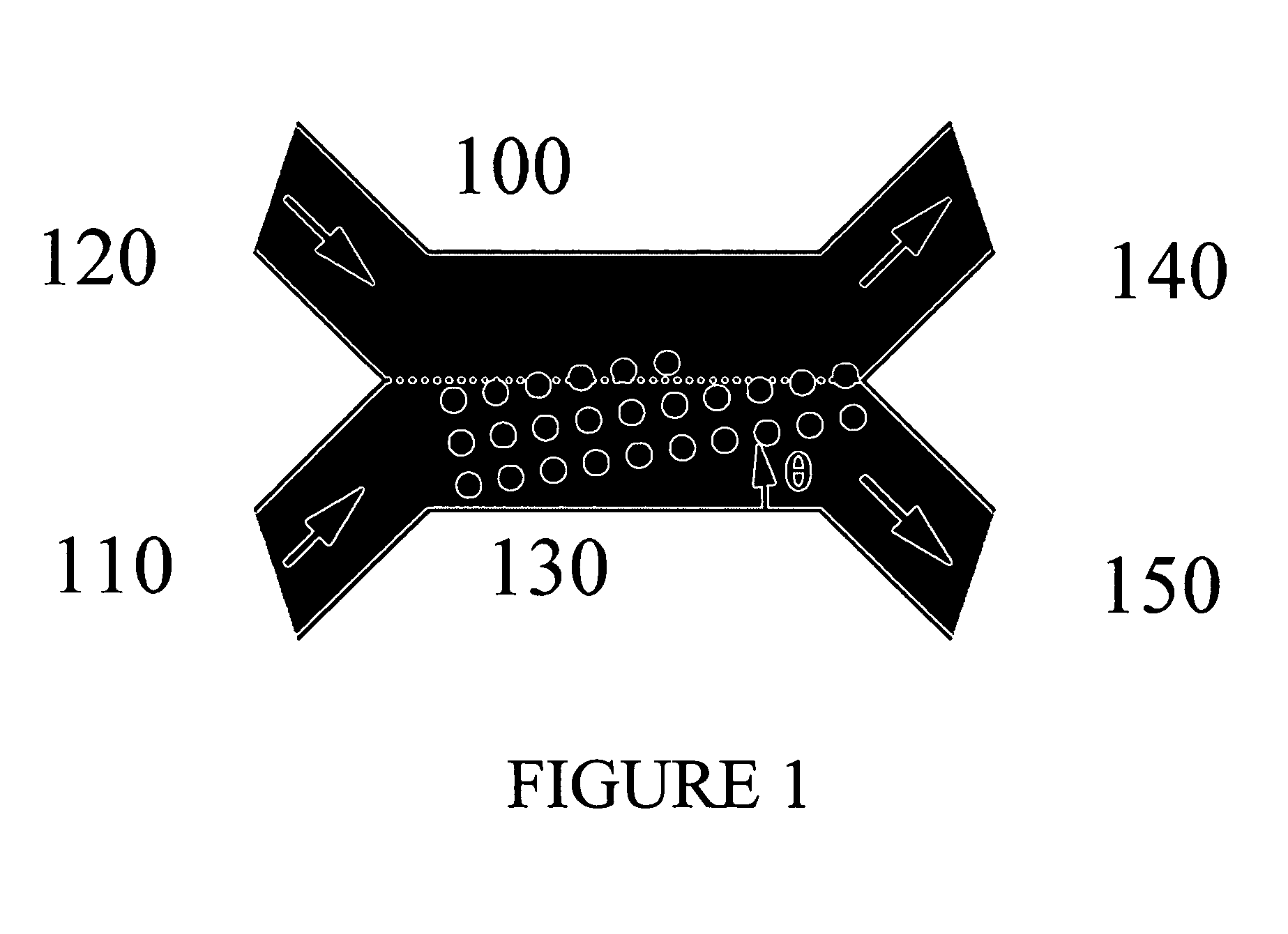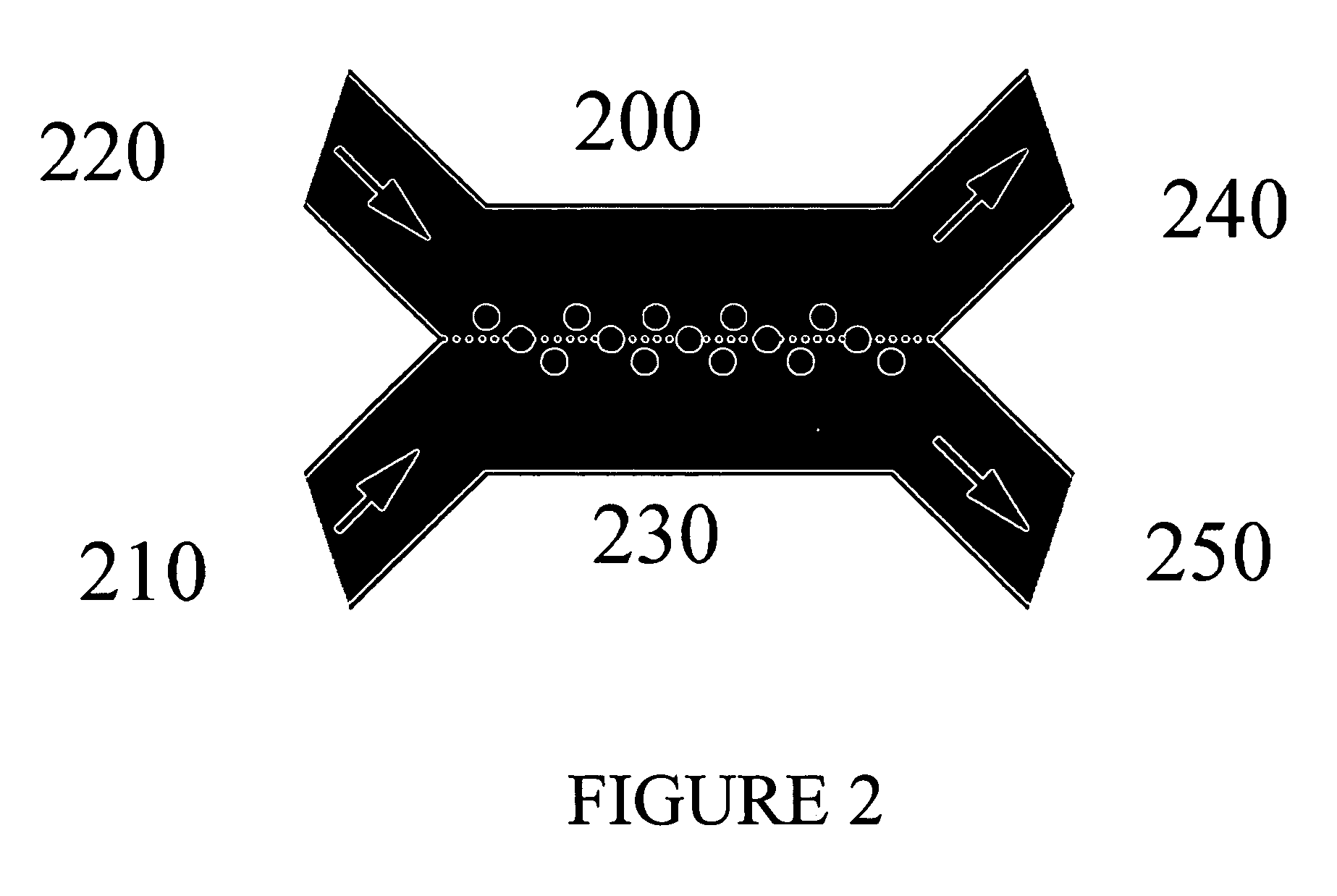Optical fractionation methods and apparatus
a technology of optical tweezers and optical fractions, applied in the field of optical fractionation methods and apparatuses, can solve the problems of prohibitively expensive computer-addressable projection systems required to implement computer-generated optical tweezers or other dynamic optical tweezers, such as scanned optical tweezers, and time-consuming computer-generated optical tweezers
- Summary
- Abstract
- Description
- Claims
- Application Information
AI Technical Summary
Benefits of technology
Problems solved by technology
Method used
Image
Examples
Embodiment Construction
[0016]The present invention relates to methods and apparatus for optical fractionation. One aspect relates to optical fractionation using an array of discrete optical traps to continuously sort small objects on the basis of their relative affinities for the optical traps and for a competing externally applied force. Another aspect of the present invention relates to “reverse” optical fractionation. A third aspect of the present invention relates to the use of a “ratcheting” optical fractionation technique.
[0017]A model system has been developed for studying modulated transport, in which individual colloidal spheres are driven through a regular array of potential wells created with discrete optical tweezers, while their motions are analyzed with digital video microscopy. Experiments on this system demonstrate that driven particles trace out a Devil's staircase hierarchy of kinetically locked-in states as the array is rotated with respect to the driving force. Within each of these sta...
PUM
| Property | Measurement | Unit |
|---|---|---|
| radius | aaaaa | aaaaa |
| radius | aaaaa | aaaaa |
| radius diameter | aaaaa | aaaaa |
Abstract
Description
Claims
Application Information
 Login to View More
Login to View More - R&D
- Intellectual Property
- Life Sciences
- Materials
- Tech Scout
- Unparalleled Data Quality
- Higher Quality Content
- 60% Fewer Hallucinations
Browse by: Latest US Patents, China's latest patents, Technical Efficacy Thesaurus, Application Domain, Technology Topic, Popular Technical Reports.
© 2025 PatSnap. All rights reserved.Legal|Privacy policy|Modern Slavery Act Transparency Statement|Sitemap|About US| Contact US: help@patsnap.com



